 How do you take 192 strategic narratives and determine which have the greatest potential to grow your business.
How do you take 192 strategic narratives and determine which have the greatest potential to grow your business.
How do you narrow this list down?
You and every business on the planet is in danger of becoming extinct. Digital Disruption has already collapsed hundreds and thousands of businesses and it’s destined to affect many more. Is your business prepared for Digital Disruption?
The surge from retail store fronts to online consumer purchases is just one sign f the marked affect Digital Disruptions impact.
If yours isn’t affected already, it will be. Soon!
This graphic shares the wave of digital disruptions impact.
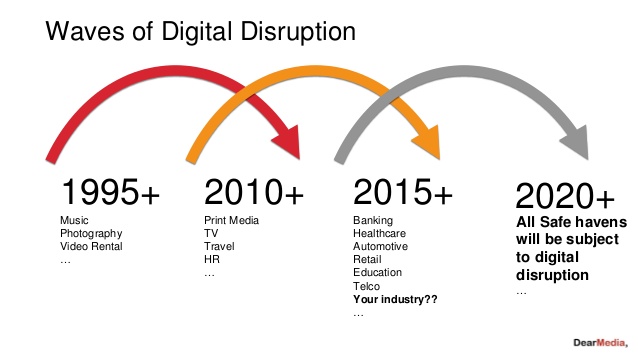 Digital is defined as the nearly instant, free, and flawless ability to connect people, devices, and physical objects anywhere.
Digital is defined as the nearly instant, free, and flawless ability to connect people, devices, and physical objects anywhere.
Is your business achieving this?
To survive your business needs to innovate. You need to strategize new ideas, new revenue sources.
How do you do it?
How do you arrive at qualitative ideas that can drive significant revenue growth to overcome the loss of revenue every business is facing due to digital?
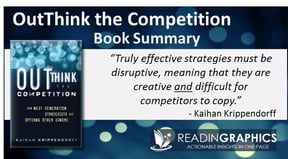 Kaihan Krippendorff, Outthink the Competition provides a pathway to generate ideas and implement those that can produce an impact on new revenue streams.
Kaihan Krippendorff, Outthink the Competition provides a pathway to generate ideas and implement those that can produce an impact on new revenue streams.
One of my customers recently worked through Kaihan’s Outthinker Process. For the last several blogs we’ve been sharing their track along this path:
- The OUTTHINKER PROCESS – FIRST STEP (Example)
- Calculate Your OUTthinker Score – The Assessment Re-Visited
- OUTTHINKER PROCESS STEP 2 – DISSECT (3 Leverage Points) Example
- STEP 3 OUTTHINKER PROCESS - EXPAND – Strategic Narratives
Today’s blog continues with Step Four: Analyze.
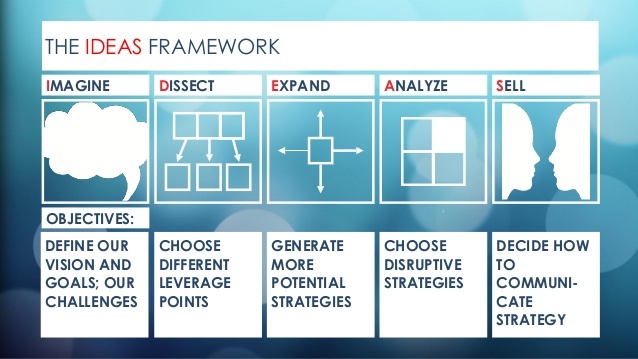 ASSESS IDEAS
ASSESS IDEAS
Sorting through 192 ideas can be a challenge, especially when, “we all tend to fall in love with our own ideas!”
Kaihan Krippendorff asked each of our team leaders to review each idea considering:
- Ease: consider time, cost, complexity, capabilities required
- Impact: only judged by your near-term goals defined in
We also categorized the 192 ideas into one of four boxes. This graphic visually displays the boxes we separated each of the ideas into.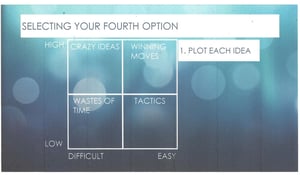
Correspondingly, each idea was ranked at to ease on a scale of:
- = very difficult,
- = difficult,
- = neutral,
- = easy,
- = very easy
And on Impact:
- = very low/ no impact,
- = low,
- = medium,
- = high impact,
- = very high impact
First plot each idea. (We this did digitally in an Excel Spreadsheet.)
With each idea, ask: Would you say this is easy or difficult? Would you say this is high or low impact? Place the idea or post-it in the corresponding square in the grid.
Ask: On what basis did you say this was high or low impact? What measure or metric would you judge impact by?
Remember in the Imagine phase; what did you say your near-term objectives were?
What almost always happens: your team forgets what the original strategic question was.
This is where the process falls in on itself. Go back and judge the impact only by those things you identified in the Imagine phase.
This is why strategies are often not strategic.
Because you didn’t plot your ideas based on your strategic goals.
OUTTHINKER PROCESS ANALYZE RESULTS
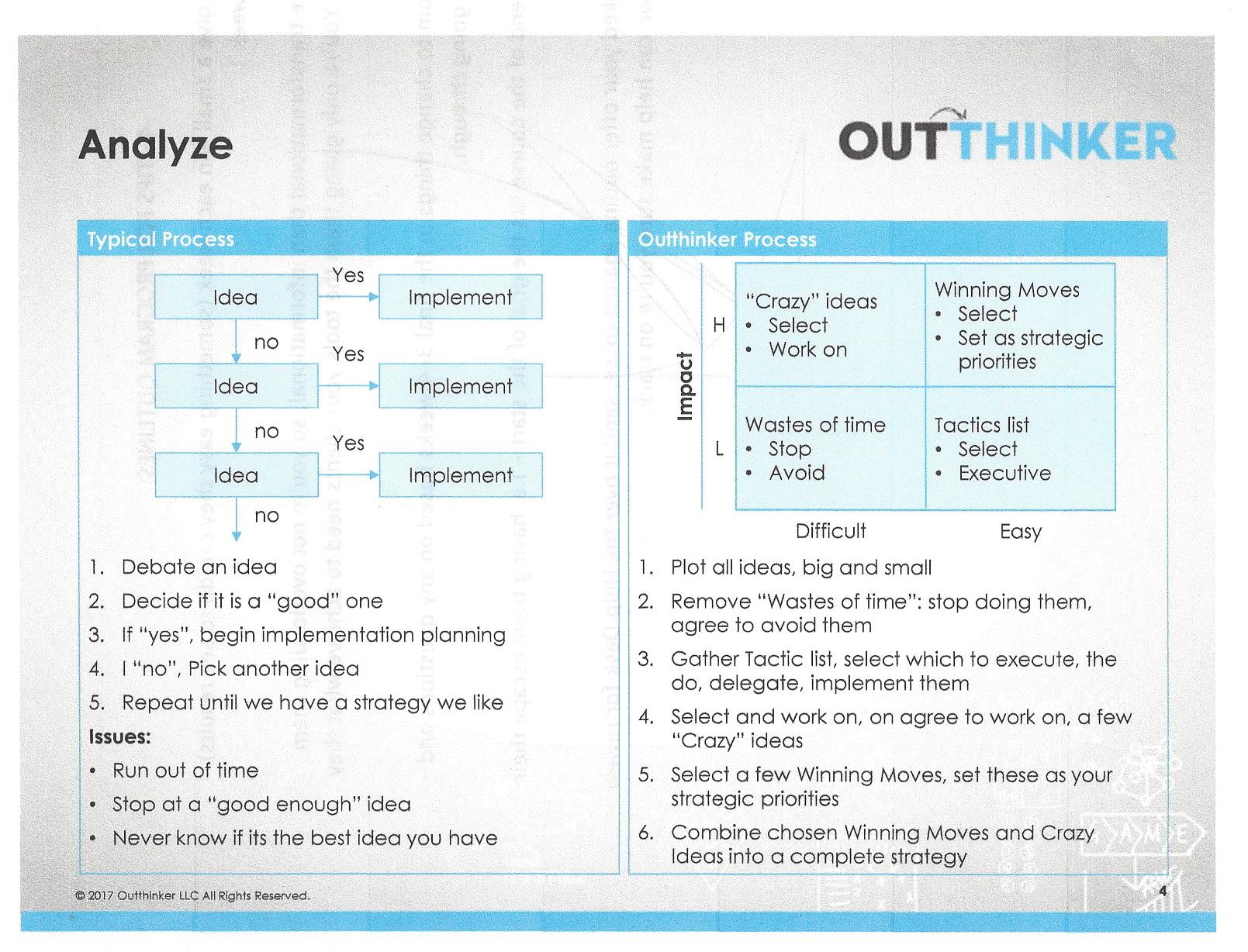 Each leader completed his rankings. Our analysis produced several potential Fourth Options.
Each leader completed his rankings. Our analysis produced several potential Fourth Options.
In this short, less than 1000 word blog it’s difficult to share the discussion, review, and critical analysis we did. We divided ideas into four segments, Winning Move, Crazy Ideas, Waste of Time, and Tactics, for potential revenue generation.
The difficult, low impact ideas are Wastes of Time.
While we eliminated these, we did review them to discover if anyone felt we missed something ant the idea should be moved to a different grid.
They are explicitly NOT part of your strategy.
Easy, low-impact ideas are Tactics. We made a list, decided which ones to do, and assigned accountability to a leadership member or delegated them.
Winning Moves are easy, high-impact.
The final step is a bit counter-intuitive. In Kaihan’s experience, the 4th Option ideas usually appear in the upper left quadrant: it the Crazy Idea.
Most companies dismiss them or put them on the “back burner” for later.
Innovative companies don’t implement them.
They work on them and see how can they move them over to a Winning Moves.
What to do with these is our Final, 5th Step: SELL, implementation
Growth demands Strategic Discipline.
3 Strategic Disciplines: Priority, Metrics and Meeting Rhythms dramatically improve your business’ forecasting, alignment, and empower your team to achieve accelerated growth. These Execution principles pave the road to success on your 3-5 year plan.
 The Outthinker Process is a Strategy Decision. Positioning Systems’ knowledge and experience help you navigate and determine your best strategy for your future growth. With experts like Kaihan Krippendorff we bring superior experience to elevate your idea generation and decision-making.
The Outthinker Process is a Strategy Decision. Positioning Systems’ knowledge and experience help you navigate and determine your best strategy for your future growth. With experts like Kaihan Krippendorff we bring superior experience to elevate your idea generation and decision-making.
We help your business achieve Execution Excellence.
Each of the Four Decisions Produces a specific outcome.
|
DECISION |
RESULT/OUTCOME |
|
PEOPLE |
|
|
STRATEGY |
|
|
EXECUTION |
|
|
CASH |
|
If you’re business is failing to achieve industry leading results in any of these areas, that Decision should be your One Thing.
Positioning Systems helps mid-sized ($5M - $250M) business Scale-UP. We align your business to focus on Your One Thing! To achieve growth, you need to evolve in today’s rapidly changing economic environment. Are you avoiding a conversation with yourself on how to can successfully grow your business? Contact dwick@positioningsystems.com to Scale Up your business! Take our Four Decisions Needs Assessment to discover how your business measures against other Scaled Up companies. We’ll contact you.
.jpg?width=600&name=outthinker%20Steps%20(Caution).jpg) NEXT BLOG: FINAL STEP OUTTHINKER PROCESS #5 – SELL – Build Buy-In.
NEXT BLOG: FINAL STEP OUTTHINKER PROCESS #5 – SELL – Build Buy-In.
How do you create Buy In on these strategic initiatives? Who is accountable, and what are your next steps. Discover this in Step 5 Sell next blog.






.jpeg?width=150&height=135&name=Hand%20with%20marker%20writing%20the%20question%20Whats%20Next_%20(1).jpeg)

